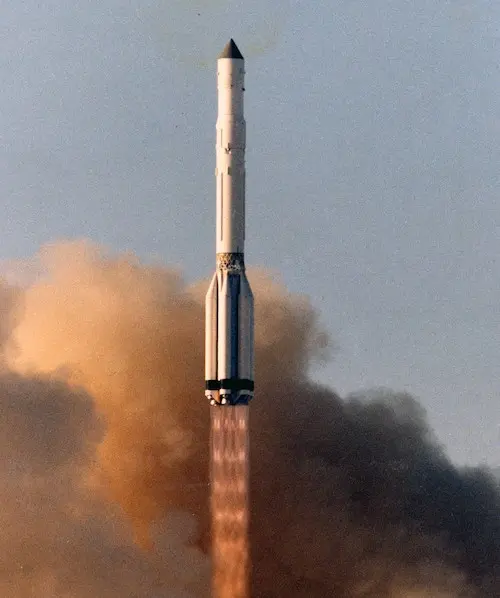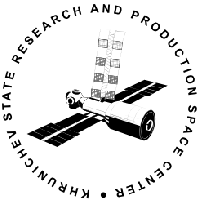Venera 9
Launch Success
Liftoff Time (GMT)
02:37:59
Sunday June 8, 1975
Mission Details
Venera 9
Venera 9 (Russian: Венера-9, lit. 'Venus-9'), manufacturer's designation: 4V-1 No. 660, was a Soviet uncrewed space mission to Venus. It consisted of an orbiter and a lander. It was launched on June 8, 1975, at 02:38:00 UTC and had a mass of 4,936 kilograms. The orbiter was the first spacecraft to orbit Venus, while the lander was the first to return images from the surface of another planet. On October 20, 1975, the lander spacecraft separated from the orbiter, and landing was made with the Sun near zenith at 05:13 UTC on October 22. Venera 9 landed within a 150 km radius of 31.01°N 291.64°E, near Beta Regio, on a steep (20°) slope covered with boulders (suspected to be the slope of the tectonic rift valley, Aikhylu Chasma). The entry sphere weighed 1,560 kg and the surface payload was 660 kg. It was the first spacecraft to return an image from the surface of another planet. Many of the instruments began working immediately after touchdown and the cameras were operational 2 minutes later. These instruments revealed a smooth surface with numerous stones. The lander measured a light level of 14,000 lux, similar to that of Earth in full daylight but no direct sunshine.
Elliptical
1 Payload
4,936 kilograms
Rocket


Manufacturer
KhrunichevRocket
Height: 56.14m
Payload to Orbit
LEO: 19,000 kg
GTO: 9,000 kg
Liftoff Thrust
9,468 Kilonewtons
Fairing
Diameter: 3.9m
Height: 10.4m
Stages
4
Launch Site
Stats
Proton-K
47th
Mission
1st
Mission of 1975
Khrunichev State Research and Production Space Center
935th
Mission
39th
Mission of 1975
1975
54th
Orbital launch attempt